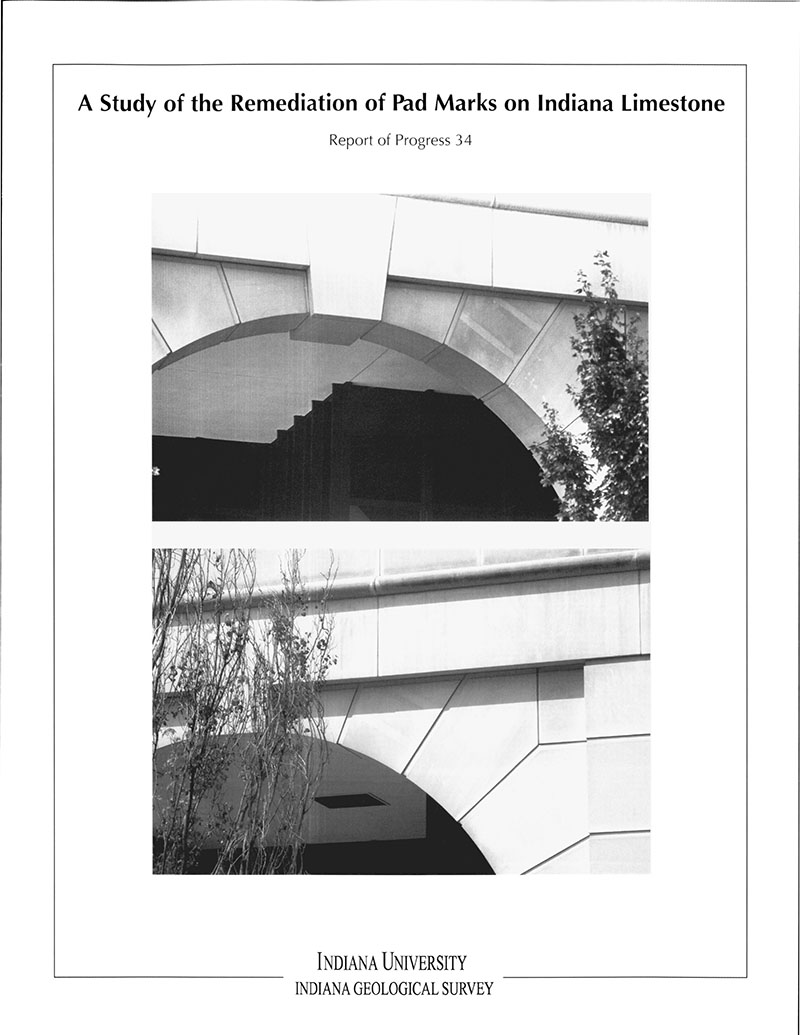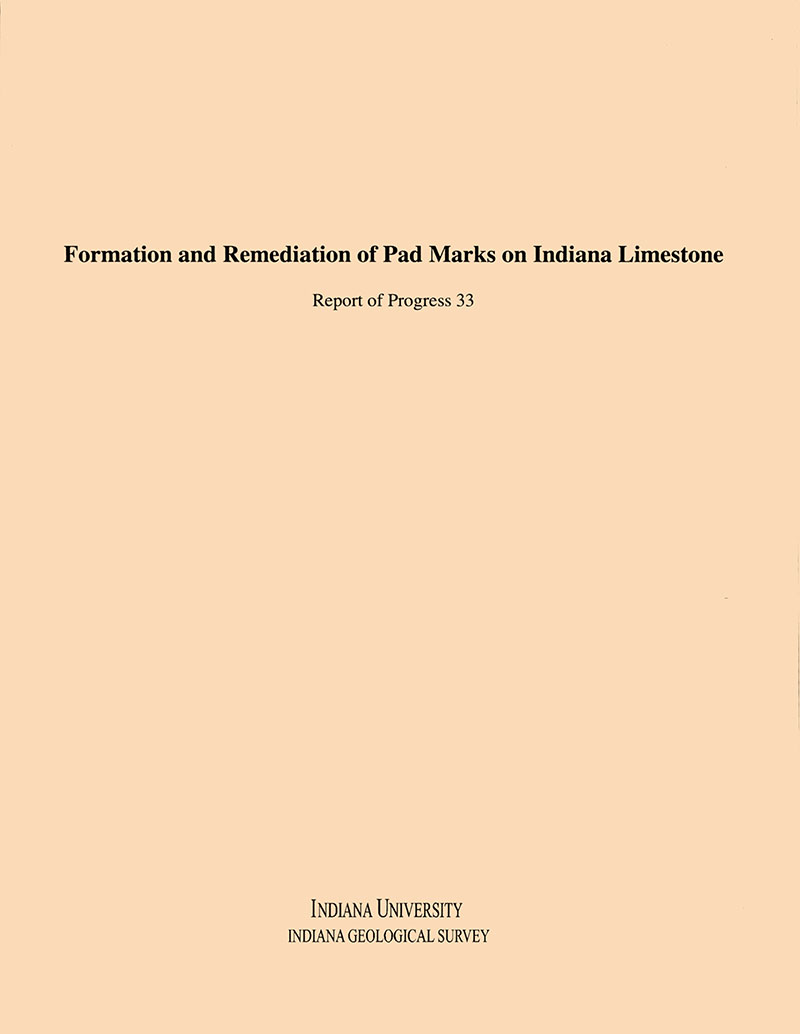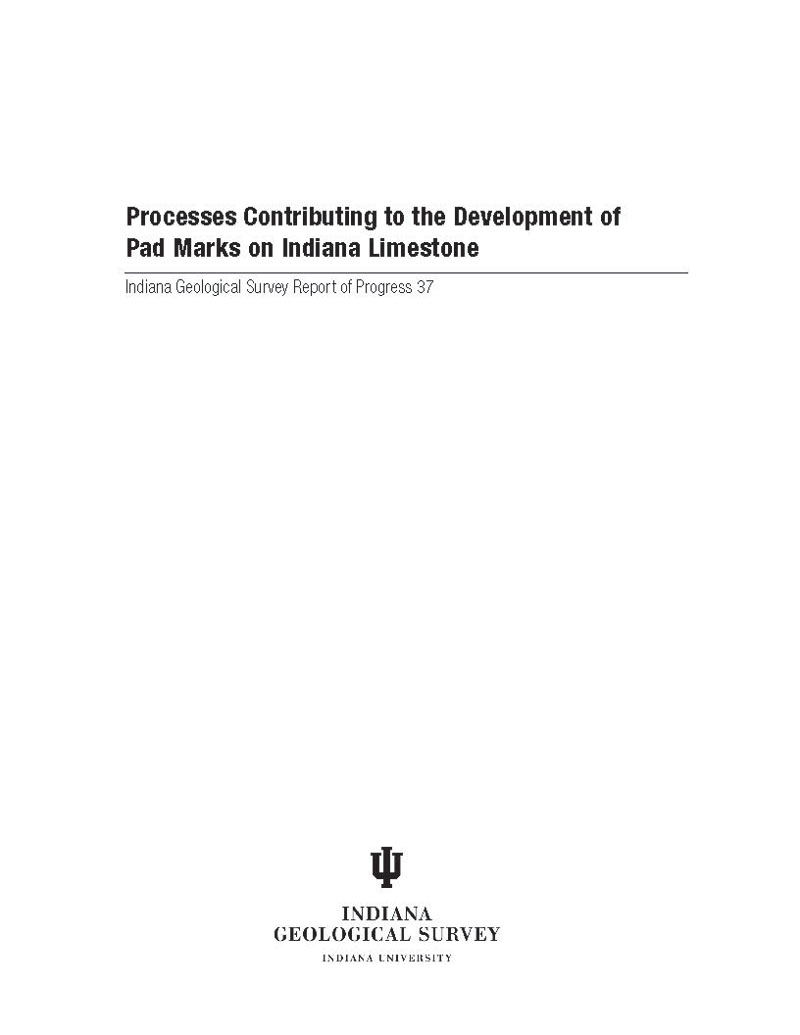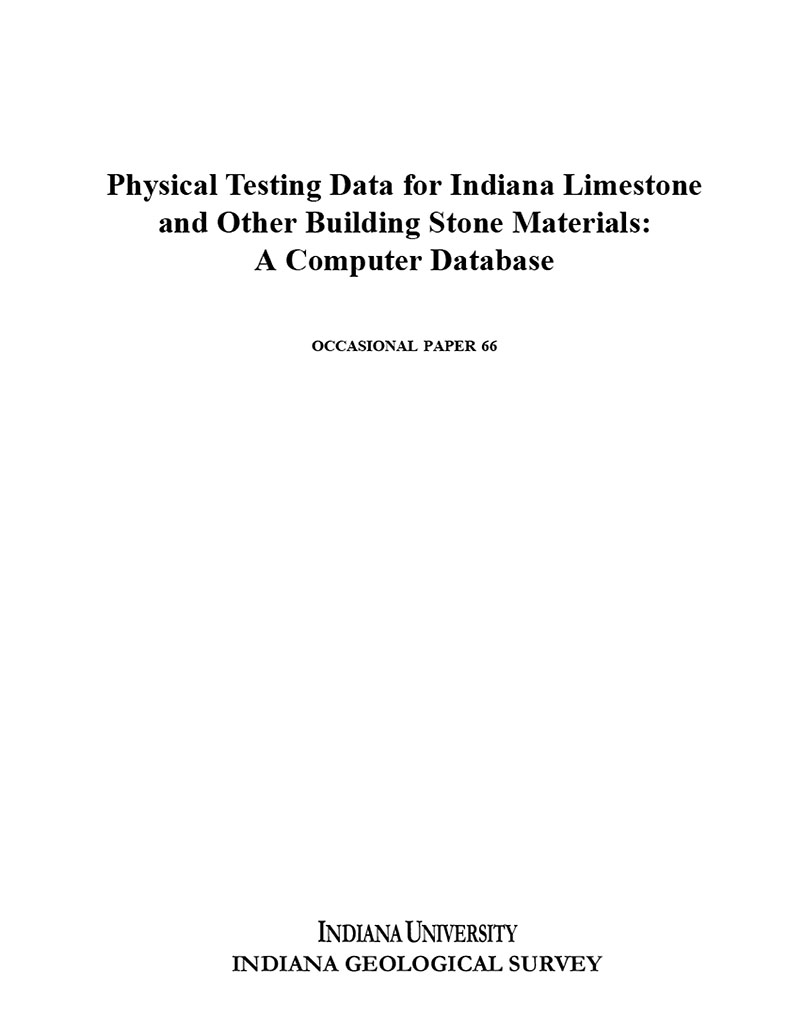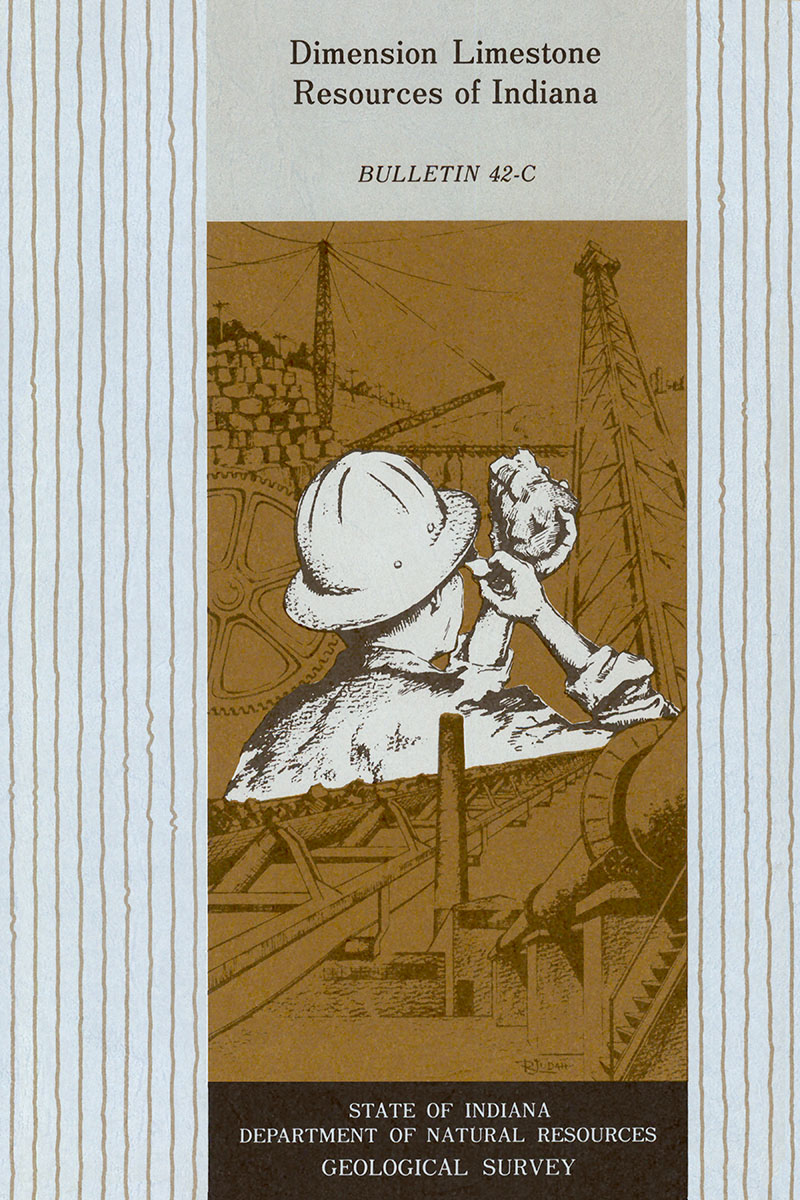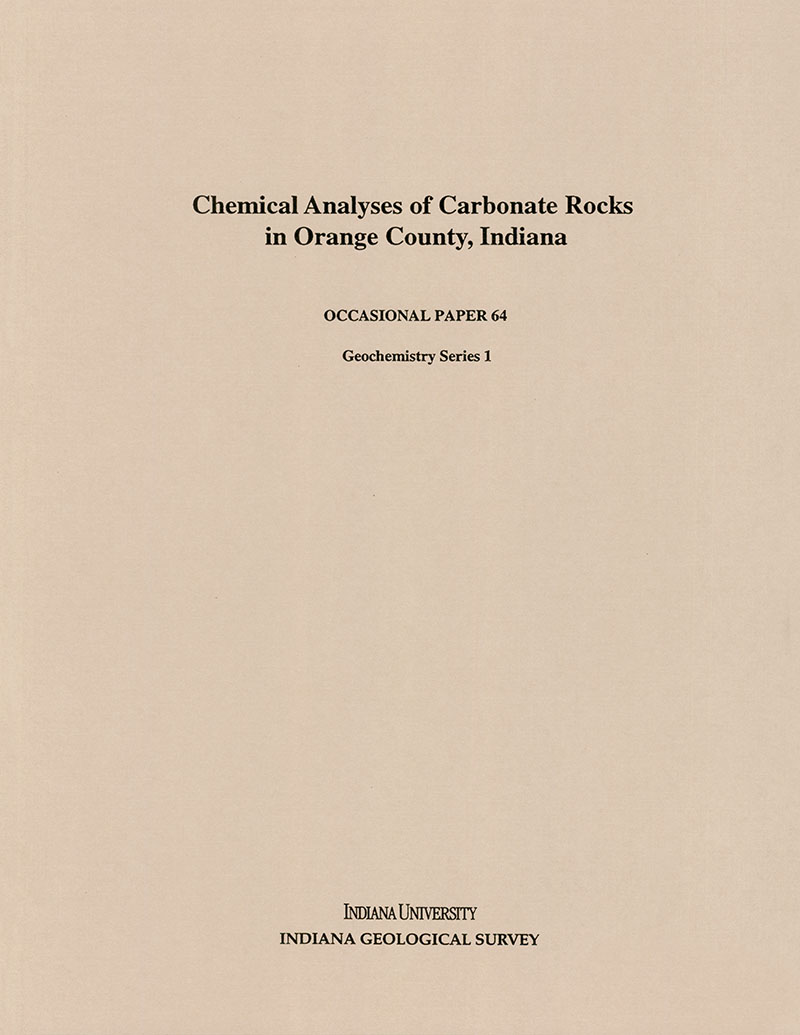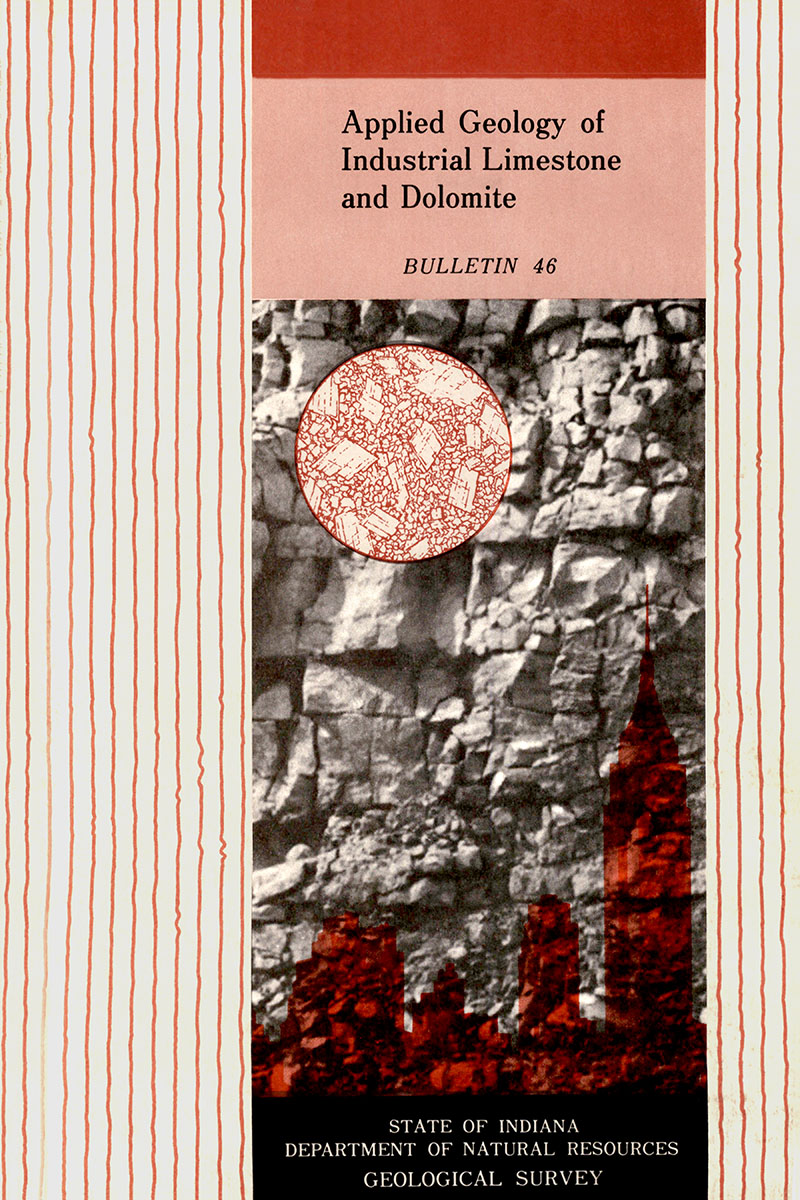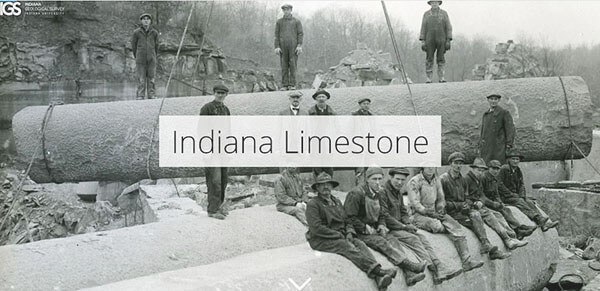A problem faced by producers and users of dimension limestone is the staining left on the stone by spacer pads when it is stacked and stored. The result of cooperation between the dimension limestone industry and the IGS, this study investigates some of the methods of removing pad-mark staining that can mar the appearance of limestone. The report will be of interest to limestone producers and mills, quarry operators, architects, construction companies, and others who work with dimension limestone.
Abstract:
Stains develop on the surfaces of Indiana dimension limestone when the padding material used as spacers to stack the finished stone on pallets is exposed to prolonged periods of high moisture. These pad marks create problems for every participant in the project, including the architect, the quarry owner, the mill, and the job-site contractor overseeing the installation. Improper cleaning techniques, particularly attempts to remove pad marks by abrasion, can so severely damage the limestone that the only solution is to replace the stone, a very costly and time-consuming activity.
An investigation of how to remove these stains without damaging the finished stone surface was pursued by the Indiana Geological Survey during a 12-month study. The project involved creating a set of pad marks by duplicating the conditions that produce the stains during the shipping and storage of milled limestone. The pad marks were treated with ten commercial products, designated by their manufacturers as masonry cleaning materials; several basic household cleaning agents; and two caustic chemical compounds. We also subjected stained samples to conditions similar to the natural exposure to the elements on the exterior of a building and noted how the pad marks were affected.
Seven of the commercial products removed part or all of the pad marks and three of the household materials removed part or all of the stains. Simulating natural weather conditions was an effective way of remediating the stains.Ennis, M. V., 2006, A Study of the remediation of pad marks on Indiana limestone: Indiana Geological Survey Report of Progress 34, 31 p., 24 figs.
You may also like:
Keywords: limestone, pad marks, building stone, industrial minerals, staining, cleaning, salem, geochemistry
Can't find what you're looking for? Feel free to contact us directly:
Indiana Geological and Water Survey
1001 E. 10th St.
Bloomington, IN 47405
812-855-7636 (phone)
812-855-2862 (fax)
IGWSinfo@indiana.edu
IGS Return Policy
- Original sales receipt required.
- Returns accepted within 30 days of purchase date.
- Refund will be issued by the same method of payment as purchased.
- Products must be returned in the same new condition as purchased.
- Refunds on custom orders and digital products are NOT allowed.
- Customers are responsible for paying shipping costs to return products.
Updated 8/19/2020



